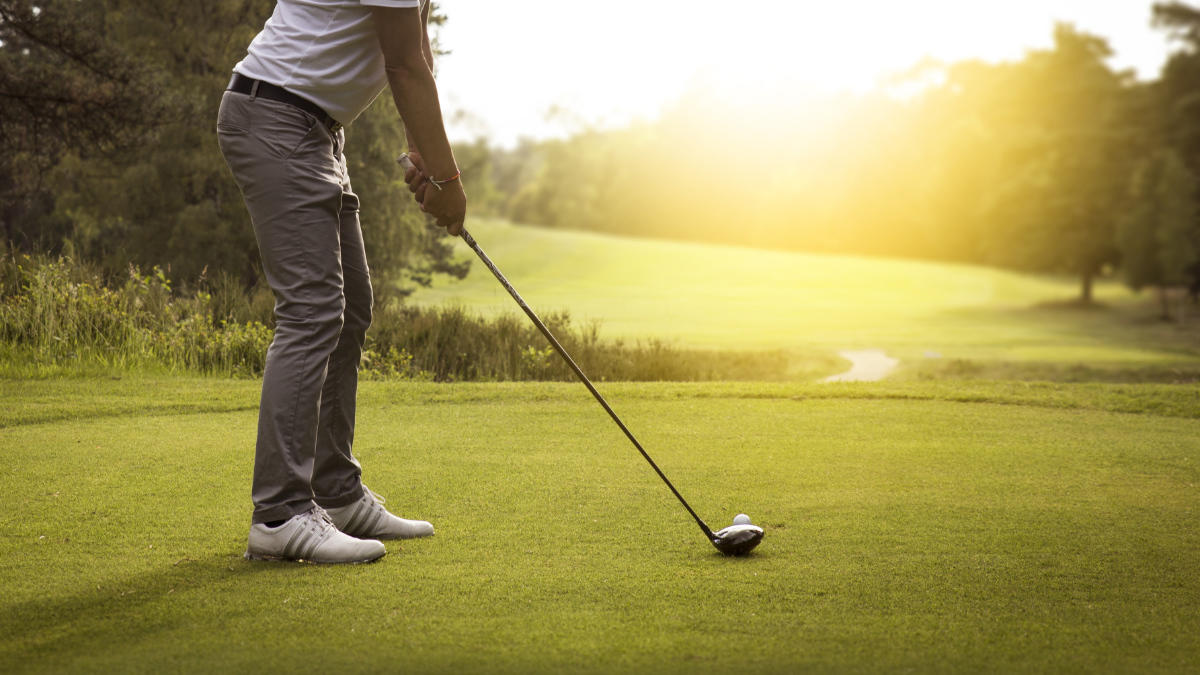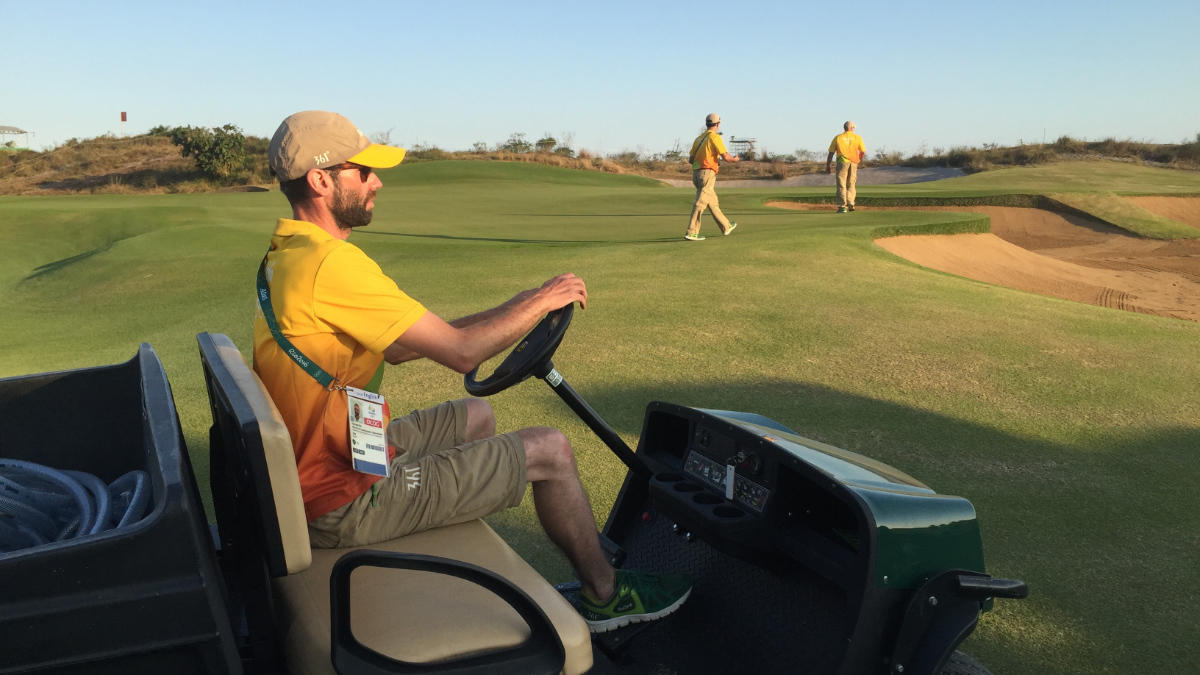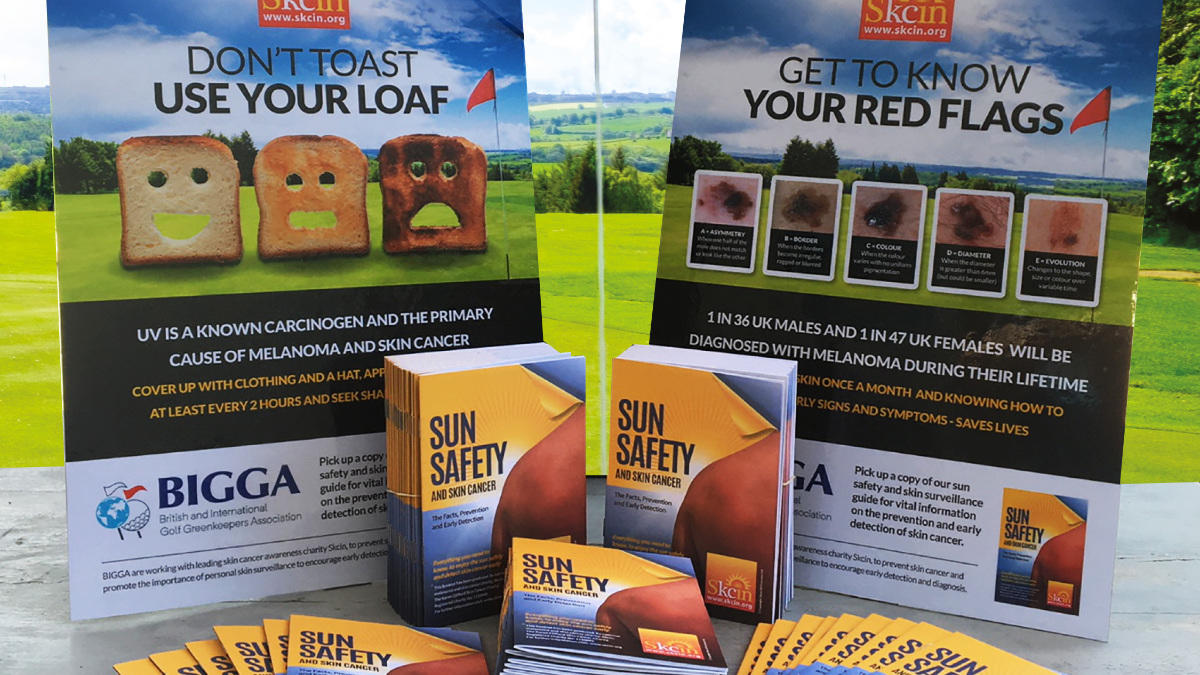- Homepage
- News and Features
- The five steps to sun safety
The five steps to sun safety

Picture by Shutterstock
With rates of skin cancer on the increase and exposure to UV radiation the primary cause of around 90% of all cases, BIGGA is committed to advising its members on the importance of sun protection and checking their skin for the early signs of change.
The five S’s of sun safety are:
- Slip on a t-shirt
- Slop on SPF 30+ broad spectrum UVA sunscreen
- Slap on a broad brimmed hat
- Slide on quality sunglasses
- Shade from the sun whenever possible
Slip on a t-shirt
- Clothing can be one of the most effective barriers between our skin and the sun
- Clothing should cover as much skin as possible
- Always keep shoulders covered that can easily burn
- A closer weave will provide more protection
- A high UPF rated fabric provides best protection
An employer's guide to skin cancer prevention
Slop on SPF 30+ sunscreen
- Never rely on sunscreen alone to protect your skin
- Always use a sunscreen with a Sun Protection Factor (SPF) 30 or above, preferably water resistant
- Make sure it’s broad spectrum and carries a UVA symbol (if it has a star rating, use a minimum 4 star)
- Store in an accessible, cool place and remember to check the expiry date
- Apply a generous amount to clean, dry, exposed skin
- Apply 20 minutes before going outdoors and preferably once again when outdoors
- Regardless of the instructions all sunscreens should be reapplied at least every two hours and more if perspiring or straight after swimming
- Protect your lips with an SPF 30+ lip balm

Slap on a broad brimmed hat
- Always wear a hat with a wide brim that shades the face, neck and ears
- A close weave or UPF rated fabric will provide better protection
- Baseball caps do not shade the ears and neck, which can easily burn
Slide on quality sunglasses
- Solar UV radiation can be damaging to the eyes so it is important to wear quality sunglasses
- Overall protection depends on the quality of the lens and the overall design
- Look for the European CE mark, which indicates a safe level of protection
- Those labelled with a high EPF (which ranges from 1-10) will provide best protection
- Ensure they are close fitting and wrap around to stop solar UVR entering the sides and top
- Remember price and darkness of the lens have no reflection on the quality of protection
An employer's guide to skin cancer prevention
Shade from the sun when possible
- Shade can provide a good barrier between our skin and the sun
- Seek shade whenever possible, particularly at the hottest times of the day between 11am and 3pm when UV penetration is strongest
- Never rely on shade alone, always combine with personal protection measures

Five free awareness packs to give away!
We have five free awareness packs to give away to BIGGA members in the UK on a first-come first-served basis! Please email [email protected]
Packs can also be purchased from Skcin’s online resource shop for £32 including delivery within the UK only. Visit shop.skcin.org.
Working with the UK’s leading skin cancer charity Skcin, who are dedicated to the prevention and early detection of both melanoma and non-melanoma skin cancers, BIGGA are educating members on how to prevent skin cancer by adopting simple sun safe practices and urging them to swot up on skin surveillance by knowing their red flags when it comes to identifying suspicious lesions.
Skin cancer is the UK’s most common and fastest rising cancer, with over 210,000 cases of non-melanoma skin cancers diagnosed annually in the UK. Melanoma, the deadliest form of skin cancer, is now one of the biggest killing cancers in the 15-34 age group and according to Cancer Research UK, one in 36 males and one in 47 UK females will be diagnosed with melanoma during their lifetime.
UV radiation from the sun is a known carcinogen, damage is cumulative, irreparable and can result in serious consequences. Greenkeepers and golfers alike are at greater risk of developing skin cancer due to the amount of time spent exposed to UV, particularly if they are not adequately protected.
It doesn’t have to be a hot, sunny day for UV to cause skin damage either. UV radiation cannot be seen or felt, it is not related to temperature, it can penetrate cloud cover and cause DNA damage to our skin cells, that can lead to the development of skin cancer.
The good news is, skin cancer is almost entirely preventable and if spotted early enough it is almost always treatable and curable. That’s why Skcin and BIGGA have worked together to produce quality awareness resources providing greenkeepers and golfers alike with a striking visual reminder of the importance of prevention and early detection with access to quality information to help of the importance of prevention and early detection with access to quality information to help them take charge of their own skin health and surveillance.
The awareness pack contains two sturdy A2 strut cards that can be wall-mounted or table top displayed and 200 copies of Skcin’s Sun Safety and Skin Cancer Awareness booklets containing a wealth of information on: the risks associated with UV exposure; how to prevent skin cancer by adopting simple sun safe strategies; and how to detect the early signs and symptoms of both melanoma and non-melanoma skin cancers.
An employer's guide to skin cancer prevention
Author

